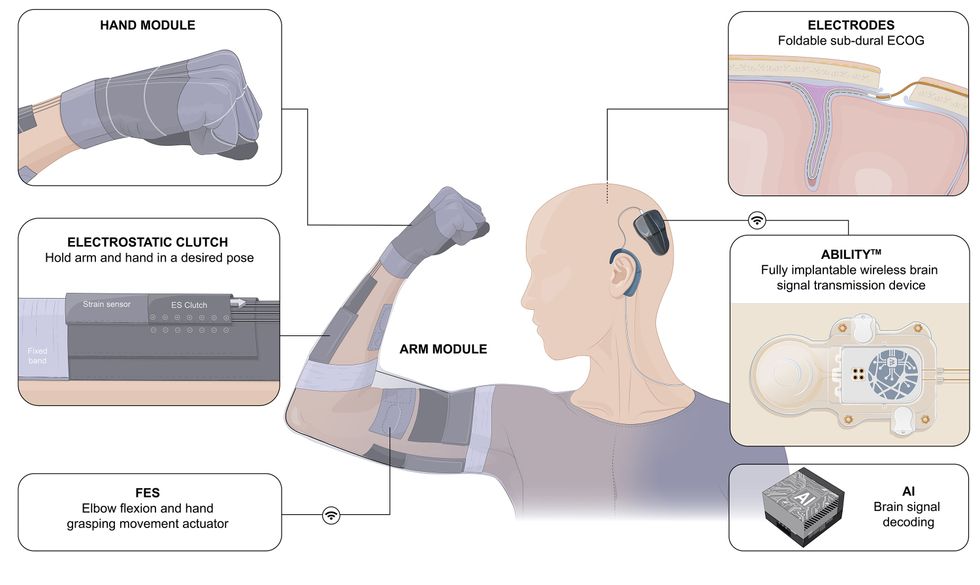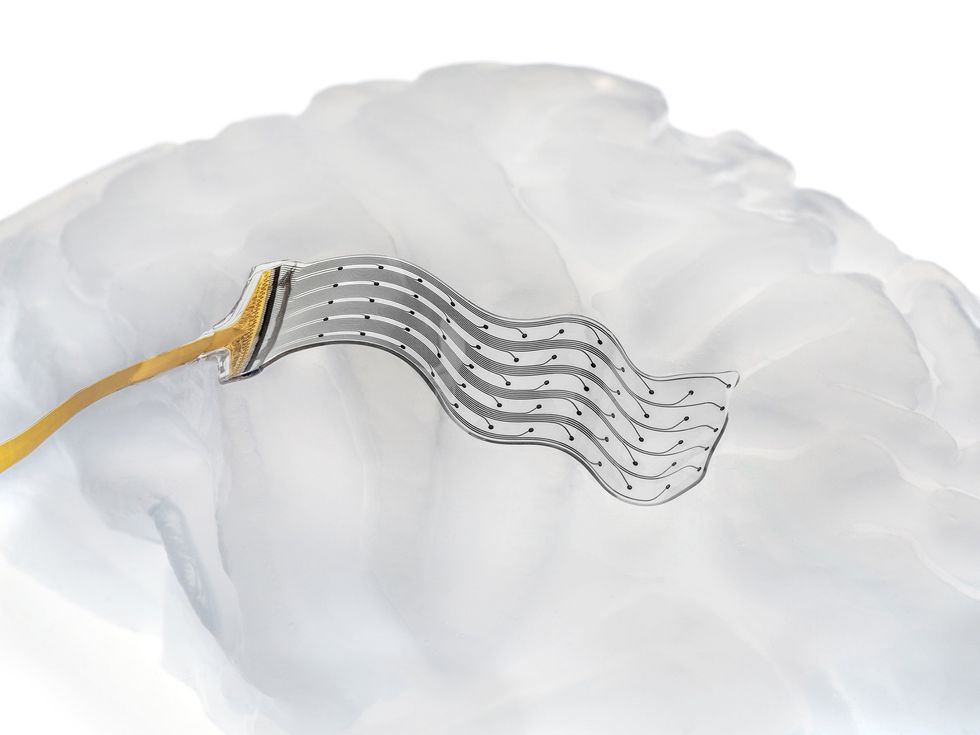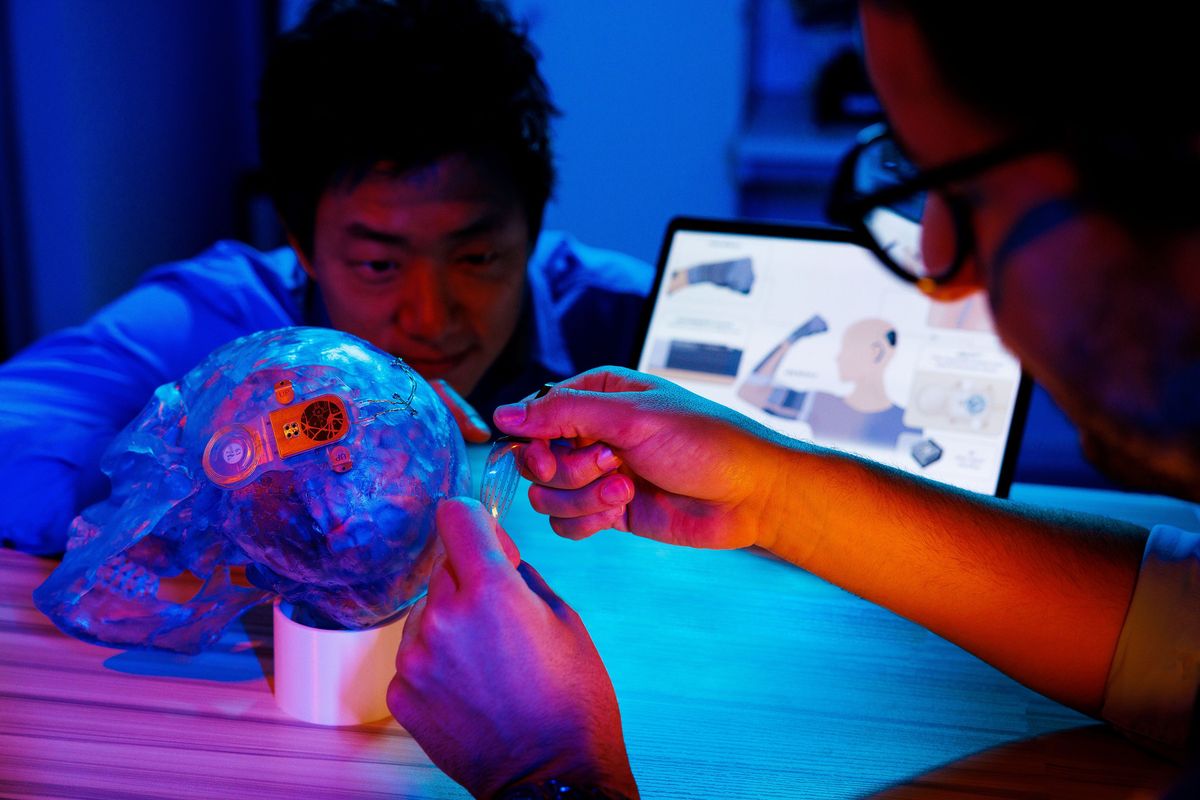Exosuits—worn assistive frames that help users move their bodies—represent a promising technology that still has big challenges ahead. Not least of which is the fatigue problem. Specifically, exosuits that use electrical pulses to move a user’s muscles will quickly tire that user out. The fatigue problem has so far evaded a neat solution, but an international group of scientists is developing a new approach to the exosuit that could tackle fatigue via a system of controllably stiffening materials.
This set of technologies—toward a powered exoskeleton device the team is calling the Synapsuit—is the brainchild of researchers and engineers in South Korea and Switzerland. Their system is designed to sidestep the fatigue resulting from prolonged muscle stimulation—a technique also known as functional electrical stimulation (FES).

Because FES is easy and cheap to implement and doesn’t require invasive surgery, it remains an attractive tool for assistive technologies. FES is currently used for physical therapy and rehabilitation, but the currents required to forcefully move a user’s body have generally proved too tiring on the muscles for prolonged use.
A new electrostatic clutch removes the need to continuously stimulate users’ muscles just to hold their joints in place.
The electrostatic clutch technology—currently being prototyped by the Korea Electronics Technology Institute (KETI) in Seongnam, South Korea—is a crucial component of the system’s design, the researchers say.
Kyuhwa Lee—machine learning scientist at the Wyss Center for Bio and Neuroengineering in Geneva and lead researcher on the Synapsuit project—says that this fatigue makes it hard to use FES systems throughout the day. “It cannot be used for the long term. To compensate for the fatigue,” Lee says, “we are using the electrostatic clutch system, so the user can maintain a fixed position.”
What’s an electrostatic clutch?
The Synapsuit’s electrostatic clutch system, the researchers say, is designed to hold a user’s joints in place between FES-driven movements. The clutches themselves are lightweight, flexible sleeves placed around the user’s elbows, wrists, and knuckles. These sleeves are normally clothlike and flexible but can be rapidly stiffened to support the joints they envelop between movements, thus removing the need to continuously stimulate the user’s muscles just to hold a joint in place.
The clutches stiffen when a voltage is applied to flexible conductive plates inside overlapping layers of material within the sleeve. “It’s like a capacitor,” says Lee. “When you apply a voltage, these materials pull toward each other and create a lot of friction.” The electrical force between the plates locks them in place with enough force to support, according to Lee, up to a 2-kilogram load. And when the potential is then lowered, the force between the layers goes away and the clutch returns to a flexible state.
Coordinating this dance between muscle stimulation and locking clutches requires fine and careful control—which is what the Synapsuit’s designers intend to be able to provide with the rest of their system.
Nitin Sharma, professor of mechanical and aerospace engineering at North Carolina State University, who is not affiliated with the research, says while he sees hope for the Synapsuit technologies, he sees plenty of room for improvement too.
“It’s a clever idea, for sure,” he says of the clutch technology. “What they haven’t shown is how the electrostatic clutch and electrical stimulation can work cooperatively. I see it will have benefits for reducing fatigue from FES, but how it will be used for cooperative control like stepping or reaching is unclear. I don’t think the clutch can do that, it’s only for holding position.”

What’s next for the Synapsuit?
While the electrostatic clutch is being refined, another team is developing neural electrodes for ultimate use in controlling the Synapsuit.
Developed by the Geneva-based Neurosoft Bioelectronics, the electrodes are now made from novel, stretchy materials that can conform to the brain’s lumpy ridges and folds, the researchers say. This sets them apart from other electrodes of this type which are relatively stiff and incapable of measuring neural activity from much of the brain’s highly wrinkled surface.
Nicolas Vachicouras, Neurosoft’s CEO, says its arrays are manufactured from highly flexible silicone using spin-coating techniques adopted from the semiconductor industry. Layer by layer, silicone and flexible conductive materials deposited onto a silicon wafer using automated processes very similar to those used to create the finicky architectures of microprocessors. “We didn’t reinvent new equipment, we just borrowed equipment typically used for something else,” says Vachicouras.
The conductive traces within the arrays were also designed to bend and stretch by making them out of “microcracked gold,” a material that maintains conductivity and stable electrical characteristics when bent out of shape. Vachicouras says that the team adopted part of the electrode from manufacturing processes developed for flexible display systems. “You never know where a technology’s going to end up,” Vachicouras says.
Don’t expect to put on the Synapsuit any time soon: while Neurosoft has begun human trials to test the system’s flexible neural electrodes, the KETI electrostatic clutch and neural-decoding software required to control the Synapsuit are still prototypes. Despite that, Lee says he expects the overall project to produce a functional Synapsuit system by 2026.
Michael Nolan is a writer and reporter covering developments in neuroscience, neurotechnology, biometric systems and data privacy. Before that, he spent nearly a decade wrangling biomedical data for a number of labs in academia and industry. Before that he received a masters degree in electrical engineering from the University of Rochester.



